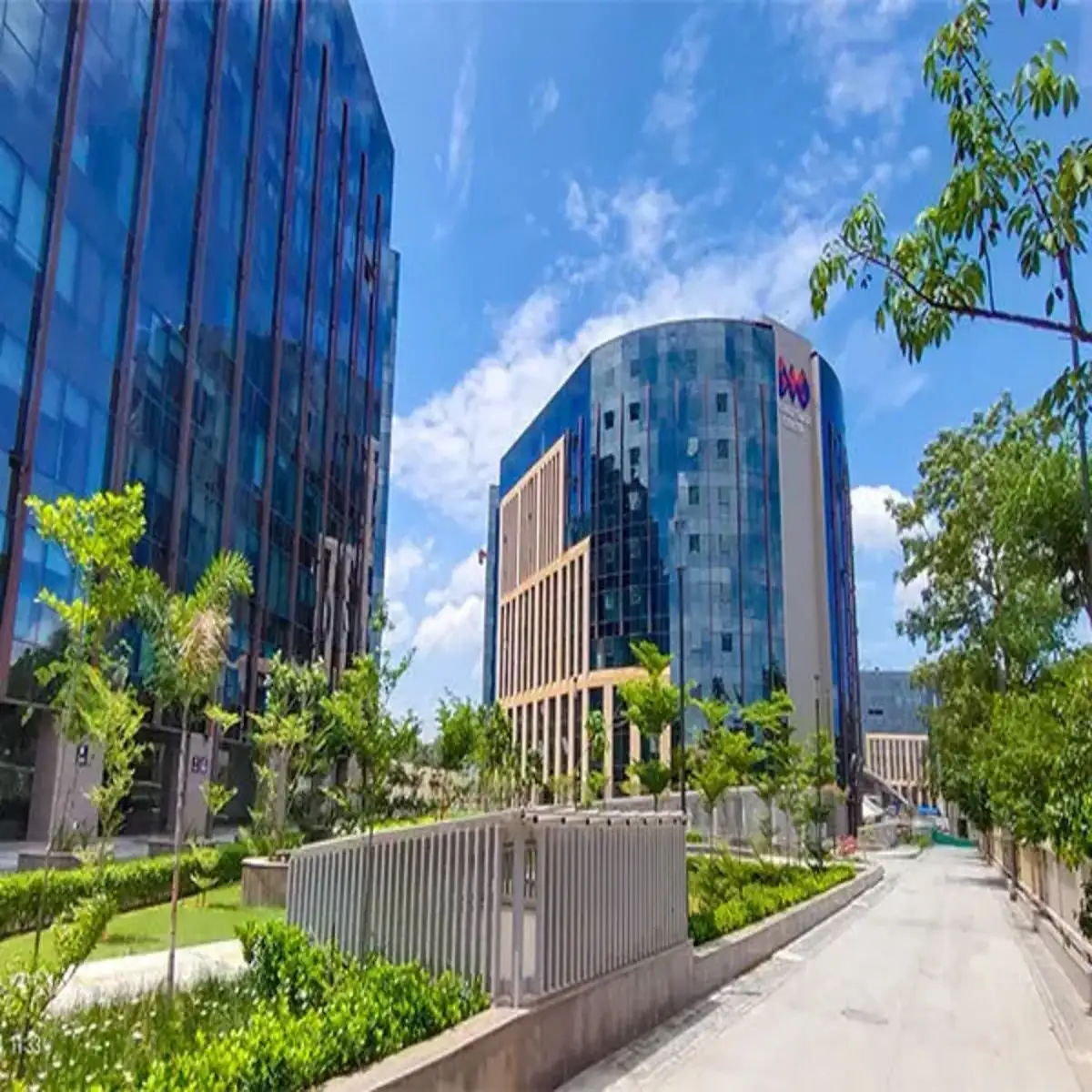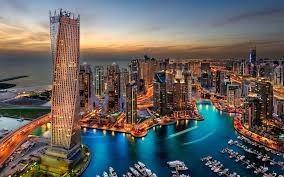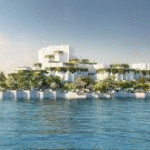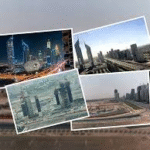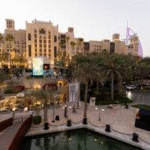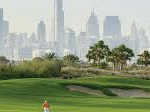Now Reading: Green Building Rating Dubai: Elevating Smart Sustainable Projects
-
01
Green Building Rating Dubai: Elevating Smart Sustainable Projects
Green Building Rating Dubai: Elevating Smart Sustainable Projects
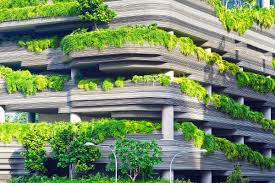
Table of Contents
Dubai, a city celebrated for its audacious architectural feats and relentless pursuit of innovation, stands at the vanguard of global efforts to integrate sustainability into the built environment. As climate change and resource scarcity become increasingly pressing global challenges, Dubai has embraced rigorous green building rating systems. These frameworks are not merely guidelines; they are mandatory standards and aspirational benchmarks designed to minimize the environmental footprint of construction, optimize resource use, and foster healthier living and working spaces. By implementing these sophisticated rating systems, Dubai is not only enhancing its urban landscape but also solidifying its position as a world leader in sustainable development.
What Defines a Green Building in Dubai?
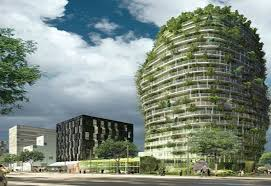
A green building in Dubai is fundamentally a structure designed, constructed, and operated to be environmentally responsible and resource-efficient throughout its life cycle. This definition encompasses a holistic approach that goes beyond aesthetics, focusing on tangible performance metrics across several critical areas:
- Energy Efficiency: Given Dubai’s hot climate, reducing energy consumption for cooling is paramount. Green buildings incorporate high-performance insulation, advanced glazing, energy-efficient HVAC systems, LED lighting, and often integrate renewable energy sources like solar panels. Passive design strategies, such as optimal building orientation and shading, are also crucial.
- Water Conservation: In an arid region, water management is critical. Green buildings utilize low-flow fixtures, greywater recycling systems for irrigation and toilet flushing, and drought-tolerant landscaping with smart irrigation to significantly reduce potable water consumption.
- Sustainable Materials and Resources: This involves selecting materials with low embodied energy, prioritizing recycled content, sourcing locally to reduce transportation emissions, and using non-toxic, low-VOC (Volatile Organic Compound) materials to enhance indoor air quality. Waste management during construction and operation is also a key component, with emphasis on recycling and diverting waste from landfills.
- Indoor Environmental Quality (IEQ): Ensuring occupant health and comfort is vital. This includes optimizing natural light, providing adequate ventilation, minimizing indoor air pollutants, and controlling noise levels.
- Site Selection and Planning: Green building principles extend to responsible site selection, minimizing disruption to natural habitats, managing stormwater runoff, and promoting connectivity to public transportation and green spaces.
Key Green Building Rating Systems in Dubai
Dubai primarily relies on its own robust system, Al Sa’fat, while also recognizing and encouraging internationally renowned certifications like LEED and BREEAM.
1. Al Sa’fat – Dubai Green Building System
Developed by the Dubai Municipality (DM), Al Sa’fat is the cornerstone of green building regulations in Dubai. Introduced initially as regulations in 2010 (mandatory for government buildings in 2011 and all new buildings in 2014), it was officially upgraded to a comprehensive rating system in 2016, with a significant update in January 2023. Al Sa’fat is mandatory for all new buildings in Dubai and classifies them into four categories:
- Bronze Sa’fat: The minimum mandatory certification for all new buildings, ensuring compliance with basic energy and water efficiency measures, material selection, and indoor environmental quality standards. This level aims to establish a baseline for sustainable construction across the emirate.
- Silver Sa’fat: This level goes beyond the mandatory Bronze, requiring stronger energy and water efficiency measures and demonstrating a higher commitment to sustainability. Most new developments strive for this level.
- Gold Sa’fat: Represents advanced sustainability standards, significantly exceeding minimum compliance. Buildings achieving Gold Sa’fat showcase innovative designs and technologies that lead to substantial reductions in energy and water consumption, superior indoor environmental quality, and responsible material use.
- Platinum Sa’fat: The highest level of sustainability, reserved for exemplary green buildings that demonstrate exceptional environmental performance, often incorporating renewable energy integration, advanced waste management, and pioneering sustainable design principles. These buildings serve as models for future sustainable development.
Al Sa’fat covers various aspects, including site ecology and planning, building vitality, resource effectiveness (energy, water, materials, and waste), and indoor environmental quality. It provides detailed technical guidelines and compliance checklists, aligning with the UAE’s Net Zero 2050 targets and Dubai Integrated Energy Strategy (DIES).
2. LEED (Leadership in Energy and Environmental Design)
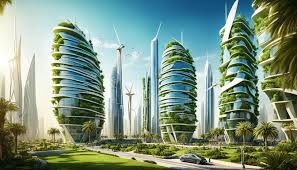
Developed by the U.S. Green Building Council (USGBC), LEED is one of the most widely recognized and respected green building certification programs globally, with a significant presence in Dubai. While Al Sa’fat is mandatory, many developers in Dubai pursue LEED certification (Silver, Gold, or Platinum) to demonstrate international best practices and enhance marketability. LEED assesses buildings based on points earned across categories such as:
- Sustainable Sites
- Water Efficiency
- Energy and Atmosphere
- Materials and Resources
- Indoor Environmental Quality
- Innovation in Design
- Regional Priority
LEED certification aligns seamlessly with Dubai’s sustainability goals and is particularly attractive to international investors and multinational corporations seeking globally recognized green credentials.
3. BREEAM (Building Research Establishment Environmental Assessment Method)
Originating in the UK, BREEAM is another globally recognized green building assessment method utilized in Dubai. It evaluates a building’s environmental performance across various categories including energy, land use, health, materials, management, pollution, transport, water, and waste. Like LEED, BREEAM provides a comprehensive framework for assessing sustainability and is often pursued for projects aiming for a high standard of environmental performance, particularly by European developers or those looking for an alternative to LEED.
4. Estidama (Abu Dhabi-specific but influential)
While Estidama, with its “Pearl Rating System,” is the mandatory green building framework for Abu Dhabi, its influence extends to Dubai. It is tailored to the unique climate and cultural context of the UAE and focuses on four pillars: energy, water, waste, and materials. Estidama’s success in Abu Dhabi has set a precedent for localized green building standards across the Emirates and contributes to a unified understanding of sustainable construction practices in the region.
Benefits of Green Building Ratings in Dubai
The widespread adoption of these rating systems yields significant benefits for all stakeholders:
- For Developers:
- Enhanced Marketability and Property Value: Green-certified buildings command higher market demand, often resulting in higher property values and faster lease-up rates due to lower operational costs and enhanced occupant comfort.
- Regulatory Compliance: Meeting Al Sa’fat standards ensures legal compliance, preventing penalties and facilitating smoother project approvals.
- Competitive Advantage: Distinguishes projects in a competitive market, attracting environmentally conscious buyers and tenants.
- Access to Green Financing: Increasingly, financial institutions offer “green mortgages” or favorable financing terms for certified sustainable projects.
- For Occupants (Residents and Businesses):
- Reduced Utility Bills: Significant savings on electricity and water consumption due to efficient systems and design.
- Improved Health and Well-being: Better indoor air quality, natural light, and thermal comfort contribute to healthier and more productive environments.
- Enhanced Comfort: Superior insulation and advanced climate control lead to a more comfortable indoor experience.
- Contributing to Sustainability: Residents actively participate in reducing their carbon footprint and supporting the UAE’s environmental goals.
- For the Environment and City:
- Reduced Carbon Emissions: Lower energy consumption translates directly to a smaller carbon footprint, aligning with Dubai’s and the UAE’s net-zero targets.
- Water Conservation: Critical in an arid region, efficient water use helps preserve precious resources.
- Waste Reduction: Encourages recycling and reuse of construction materials, diverting waste from landfills.
- Biodiversity Protection: Responsible site planning helps protect local ecosystems.
- Climate Resilience: Buildings are designed to be more resilient to extreme temperatures and other climate impacts.
- Global Sustainability Leadership: Reinforces Dubai’s commitment to sustainable urban development on a global stage.
Regulatory Framework and Enforcement
The Dubai Municipality (DM) is the primary authority responsible for enforcing green building regulations. This enforcement occurs at various stages of the building lifecycle:
- Permit Application: Developers must submit detailed plans demonstrating compliance with Al Sa’fat requirements during the initial building permit application. A “Green Building Declaration” signed by the design team is typically required.
- Design Review: DM engineers review architectural and engineering designs to ensure they incorporate the necessary green building features and technologies.
- Construction Inspections: Throughout the construction phase, DM conducts inspections to verify that approved green building specifications and materials are being implemented correctly.
- Completion and Certification: Upon completion, the building undergoes a final assessment to confirm adherence to the chosen Al Sa’fat rating. Certification is awarded based on verified performance.
- Post-Occupancy Monitoring: For certain projects, ongoing monitoring of energy and water consumption may be required to ensure continuous compliance and optimize performance.
The Emirates Green Building Council (EmiratesGBC) also plays a vital role by advocating for green building practices, providing training, and offering resources to industry professionals.
Challenges and Future Outlook
While Dubai has made remarkable strides, challenges remain:
- Initial Cost Perception: Despite long-term savings, the upfront investment for sustainable technologies and materials can be higher, which can be a barrier for some developers, although this gap is narrowing.
- Knowledge Gaps: A continuous need for education and training across the construction value chain to ensure widespread understanding and effective implementation of green building principles.
- Supply Chain Maturity: Ensuring a consistent and cost-effective supply of advanced green building materials and technologies.
- Retrofitting Existing Buildings: While new constructions are covered, the challenge lies in retrofitting older buildings to meet modern green standards, which requires significant investment and specialized expertise.
The future of green building ratings in Dubai is exceptionally bright and dynamic:
- Stricter Standards and Broader Application: Expect green building codes to become even more stringent, potentially expanding to cover renovations of existing buildings more comprehensively. The drive towards the UAE’s Net Zero by 2050 target will mandate higher efficiency benchmarks.
- Increased Integration of Smart Technologies: AI, IoT, and advanced Building Management Systems (BMS) will become more deeply integrated into green buildings to optimize performance, monitor consumption, and provide real-time data for efficiency improvements.
- Focus on Embodied Carbon: Beyond operational energy, there will be a growing emphasis on reducing embodied carbon (emissions associated with materials and construction processes), driving demand for low-carbon materials and innovative construction techniques.
- Circular Economy Principles: Greater adoption of circular economy models in construction, promoting waste reduction, material reuse, and recycling at every stage of a building’s lifecycle.
- Green Financing and Incentives: Expect more robust financial incentives from both government and private financial institutions to encourage green building development and retrofitting.
- Unified UAE Standards: There is a strong potential for greater harmonization of green building standards across all emirates, leading to a more unified approach to sustainable development across the UAE.
In conclusion, Dubai’s green building rating systems are pivotal in shaping a sustainable and resilient urban future. Through mandatory regulations, advanced technologies, and a clear vision, Dubai is not just building structures; it is constructing a legacy of environmental responsibility and enhancing the quality of life for generations to come. The continuous evolution of these rating systems underscores Dubai’s unwavering commitment to leading the world in sustainable urban development.
WATCH MORE: https://www.youtube.com/watch?v=0v1PNqwV_W4
READ MORE: Eco-Friendly Homes UAE: Unlocking Your Best Sustainable Lifestyle



